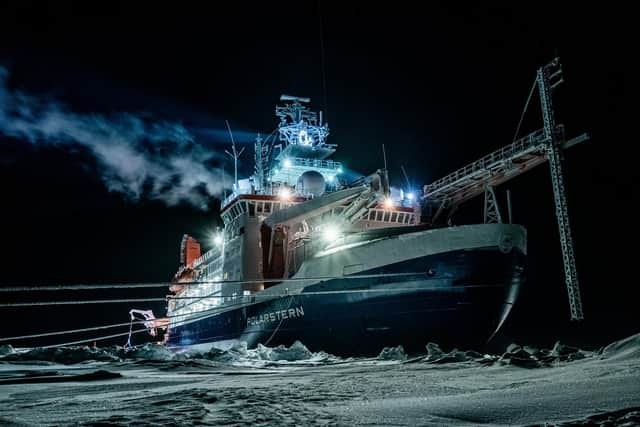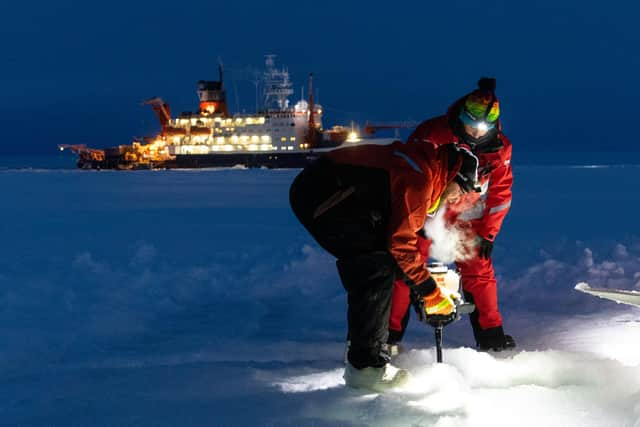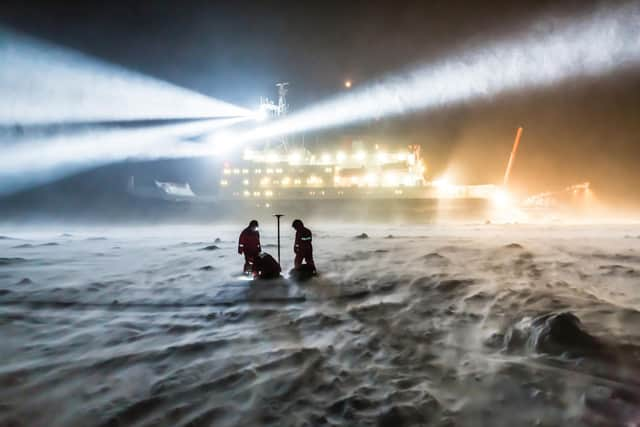COP26: The scientists who spent a year drifting on an Arctic ice pack, enduring months of darkness, fierce weather and danger from polar bears
That was life for a team of international researchers who took part in Mosaic, the biggest ever scientific investigation into the Arctic environment and how it is being affected by global warming.
“This mission is the climate science equivalent of going to the moon,” said Dr Allison Fong, ecosystem research leader for the expedition.
Advertisement
Hide AdAdvertisement
Hide Ad“It’s about taking stock of what we’ve done to the earth and what we can still do.
“If you’d asked me if I ever imagined myself working in the Arctic, going to polar bear safety training, handling a rifle, I would have laughed at you.”
The £120 million project, which took place in 2019 to 2020, was the culmination of ten years of planning and a collaboration involving 80 institutions from 20 countries.
The expedition is the subject of a documentary – Arctic Drift, A Year in the Ice – produced by Fremantle, which was screened at COP26 in Glasgow.


The Arctic plays an important role in keeping the world’s climate systems in balance and helps circulate ocean currents, moving cold and warm water around the globe.
Arctic sea-ice helps control the planet's temperature, providing a cooling effect.
But the region is warming twice as fast as everywhere else, and the ice is melting at a worrying rate.
The Mosaic team set out to collect a huge range of new data, covering five key areas – atmosphere, ice, biogeochemistry, ecosystems and ocean – that will help the scientific community understand the state of the Arctic, how it has been affected by rising temperatures and the role it could play in future warming.


Advertisement
Hide AdAdvertisement
Hide AdFirst they had to very precisely ram their research vessel, the icebreaker Polarstern, into a specially selected ice floe and let it become frozen in.
This would form their base for the next 300-odd days.
Fong believes the new multidisciplinary studies will help create a “holistic” picture of the Arctic.
“It’s like a puzzle, but the data will help us understand how everything fits together and how it will influence global changes,” she said.


Most team members spent three months at a time at the camp, but some were there longer.
Climatologist and sea ice expert Julienne Stroeve led the remote sensing research.
She was on board during the darkest days of winter.
“We didn’t see the sun for four months.
“There was no light until the end of February, when we saw a wee glow on the horizon.
“The biggest risks are the cold and the dark.
“You don’t realise how much slower you are at getting things done. You can’t take a glove off for long because your hands freeze.
“And being on polar bear guard duties is hard because of the cold – you can only do it for a couple of hours at a time.”
Advertisement
Hide AdAdvertisement
Hide AdArctic Drift, A Year in the Ice can be viewed on-demand at All 4, and is available to watch in 170 countries worldwide.
A message from the Editor:
Thank you for reading this article. We’re more reliant on your support than ever as the shift in consumer habits brought about by coronavirus impacts our advertisers.
If you haven’t already, please consider supporting our trusted, fact-checked journalism by taking out a digital subscription.
Comments
Want to join the conversation? Please or to comment on this article.
